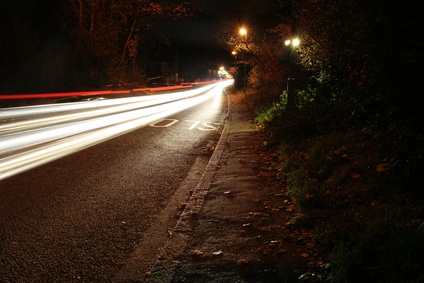
Xenon High Intensity Discharge (HID) headlights allow for better reflection of road signs and markings, including intersections and objects. They produce a daylight-type white light rather than the yellow light you get from conventional headlight bulbs. According to Philips, natural daylight-type light reduces eye fatigue while driving. Problems with the bulbs can be related to the installation. You can't insert Xenon HID bulbs into non-HID lighting systems because they need special equipment. Other problems can include voltage issues and kit installation compatibility. These kinds of problems can be rectified by following some troubleshooting steps.
Check that your headlights are HID-ready. If you insert an HID bulb into a headlight, turn it on and it doesn’t work, the headlights may not be HID-ready. HID headlights need an electronic ballast and a starter. Check your vehicle documentation to make sure that your vehicle is kitted-out correctly.
Verify that daytime running lights are disconnected. If your HID headlights are an aftermarket option installed subsequent to the vehicle leaving the factory, and don’t work or burn out, check you've disconnected the daytime running lights. There’s not enough voltage to run both the HID lights and the daytime running lights. Look for a fuse in the vehicle’s fuse box. The fuse box is usually located under the hood or in the passenger compartment near the driver. Remove the fuse marked “Daytime Running Lamp” or similar. Use the tool that's included in many fuse boxes.
Turn off automatic headlights if the kit HID lights won’t start. Again, there’s not enough voltage for both. You’ll find a switch in the lighting control cluster. The lighting control cluster, which is the control you use to operate the lights, is in a location distinct for your vehicle.